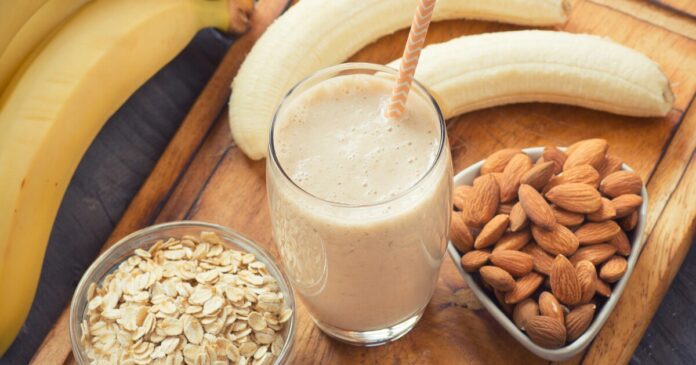Fruit smoothies have become a huge trend in healthy lifestyle world – and for good reason. They are a quick source of vitamins, fiber, and antioxidants, and they take just a few minutes to make! Bananas are the number-one ingredient for a good smoothie. Creamy and naturally sweet, they seem to pair well with pretty much every other fruit … or do they?
According to new research from the University of California, Davis, it depends a lot on what you mix them with. Some fruits, such as bananas and apples, are rich in polyphenol oxidase (PPO) – the reason they turn brown so quickly when peeled or cut. PPO is not necessarily good or bad, it’s just a natural enzyme of the fruit.
Other fruits contain a lot of flavanols – bioactive compounds that are beneficial for the heart and brain health. They are mostly found in grapes, blueberries, blackberries, and cocoa. Flavanols have anti-inflammatory effects, can lower blood pressure, and improve insulin sensitivity – great for overall wellness and health.
According to the Academy of Nutrition and Dietetics, adults need 400 to 600 milligrams of flavanols per day – roughly the equivalent of four cups of berries, two cups of brewed green tea, or 50 grams of dark chocolate. Or, you can get them in a glass of smoothie – but only if you make it right.
Here is the catch: PPO and flavanols don’t combine well. Nothing harmful, but PPO reduces the amount of flavanols your body can absorb. That said, banana-berry smoothie still tastes great, but nutrition-wise, it’s just an expensive way to give you blender some purpose.
In the UC Davis study, researchers had participants drink one mixed-berry smoothie with banana and one without. They also added a flavanol capsule as a control. Blood and urine samples showed that participants who had the banana smoothie absorbed 84% fewer flavanols compared to the control group.
“We were really surprised to see how quickly adding a single banana decreased the level of flavanols in the smoothie and the levels of flavanol absorbed in the body. This highlights how food preparation and combinations can affect the absorption of dietary compounds in foods,” said the lead author of the study, Javier Ottaviani.
So, if blending bananas and berries in a smoothie is not ideal, then what makes a good combo? Bananas pair best with vegetables: kale, spinach, or cucumber, while berries mix well with low-PPO activity fruits like pineapple, mango, and orange.
The research also showed that timing matters. The longer a smoothie sits before drinking, the more time PPO has to act on flavanols, reducing their benefits. So, if you make a smoothie and get distracted for an hour, the effect of flavanols will be close to zero at that point. Less procrastination = more flavanol intake!
Here’s another tip: add citrus. The acidity from limes or oranges can reduce PPO activity. Using frozen bananas instead of fresh ones helps too, since lower temperatures slow down PPO action and preserve flavanols better. But even though these tricks can slightly improve flavanol absorption and protect more nutrients, they don’t completely stop enzyme activity.
In the end, the best strategy for a healthy smoothie is a combination of all these tips: use a bit of science, blend smart, keep it cold, and drink it fresh.
A paper on the research was recently published in the journal Food and Function.
Source: UC Davis


